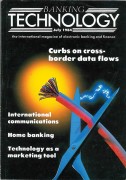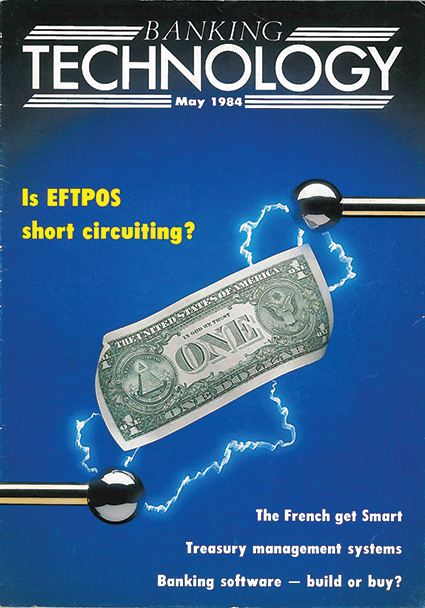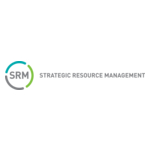30:30 hindsight – Thirty years of Banking Technology
One of the first things I did when I took over as editor at Banking Technology in 2004 was to order up a complete set of back issues from the warehouse. They are still on the shelf here in the office.
Over the following weeks I sat up late, charting a history of how the magazine had covered various topics and themes. My interest was twofold: firstly, how did the magazine live up to its aim of covering the industry from retail banking to high frequency trading and all stops in between?
The second reason was marginally more selfish: I wondered to what extent the prejudices or experience of the incumbent editors had biased that coverage. Having spent the previous decade writing pretty much exclusively on front-office trading systems and the industry that surrounds that, I was wary of skewing the coverage in that direction and neglecting other portions of the readership – I still am, come to that.
The results were a pleasant surprise: on the whole, there was no discernable pattern in the prominence of certain topics over the longer term – in the shorter term, yes, there were periods when hobby-horses were being ridden (not to mention dead horses flogged). The arrival of futures exchanges, particularly the London International Financial Futures Exchange, seems to have excited my predecessor of the time more than might have seemed warranted.
On the whole though, it would seem that the decision to report across the board worked pretty well – if anything, what I found was that the maxim of the Watergate reporters Woodward and Bernstein, “Follow the Money”, was the working principle. If there was a technology that banks were spending money on, or might, it was going to get covered. (“Nixdorf in £1.5 million deal with Northern Rock,” May 1984).
The coverage was actually a lot broader in the first year than it has become since: back in 1984, the whole industry was a lot smaller, so it was possible to cover a much higher percentage of everything that was going on. Today, we have to be a lot more selective as the email inbox fills up with announcements and clamourings for attention – there simply isn’t space in a magazine, and even on the website, there simply isn’t time.
The other thing that surprised me looking at those first few issues was how many of the topics are still with us. Readers who get as far the Out of Office page at the back of today’s version of the magazine will have seen the regular From the Archive column running there. Selecting the headlines from back issues often has us smiling with recognition at familiar topics from the present day.
 Focussing in on the first year shows that this breadth goes all the way through the coverage. At the end of 1984, an index of the first year’s coverage was produced (the only time this happened, as far as I can tell). The 350 or so stories that appeared in the eight issues published that year have a lot of names unfamiliar to the majority of modern readers – Aregon, Burroughs, Bunker Ramo Information Systems on the vendor side, Manufacturers Hannover, Hill Samuel, Hoare Govett, on the banks and broker side (not to mention a list of building societies that reads like a municipal war memorial) – but those have been replaced by names that would have been unfamiliar to the reader of 30 years ago. Others have been absorbed – computer maker Burroughs, for instance, became part of Unisys following a merger with rival Sperry Univac.
Focussing in on the first year shows that this breadth goes all the way through the coverage. At the end of 1984, an index of the first year’s coverage was produced (the only time this happened, as far as I can tell). The 350 or so stories that appeared in the eight issues published that year have a lot of names unfamiliar to the majority of modern readers – Aregon, Burroughs, Bunker Ramo Information Systems on the vendor side, Manufacturers Hannover, Hill Samuel, Hoare Govett, on the banks and broker side (not to mention a list of building societies that reads like a municipal war memorial) – but those have been replaced by names that would have been unfamiliar to the reader of 30 years ago. Others have been absorbed – computer maker Burroughs, for instance, became part of Unisys following a merger with rival Sperry Univac.
When RBS reintroduces the Williams & Glyn’s brand later this year, we will have gone full circle – there they are in the very first issue replacing their IBM mainframe computer used in the treasury department with two Data General minicomputers, and again in August buying ATMs from NCR.
The technologies have also changed: the notion of embedding Near Field Communications capability in a smartphone would have been science fiction, though not inconceivable, in 1984. The brutally short life of technologies is amply demonstrated by the listings for the likes of optical disks, and the Minitel videotext terminal. Fax machines, you may well add.
Yet while specific technologies have moved on, taking with them specific products and even specific companies, at a general level, things remain surprisingly constant. The recurrent themes of then are much the same as of now – standardisation, regulation, automation.
There is always a tendency to laugh at the past; with a patronising shake of the head we wonder how those people could have been so deluded.
Take the cover story from the very first issue: Is EFTPos short-circuiting? Apart from noting that it was considered necessary to add the wordsElectronic Funds Transfer to Point-of-sale, the story is largely familiar:
“Electronic funds transfer is the banks’ only hope of escaping from the landslide of cheques and paper that is threatening to overwhelm them … it is hardly surprising that the banks are anxious to press ahead with EFTPoS developments.
“Yet the success of the new systems will, in the final analysis, depend on their acceptance by retailers and consumers, and it is not clear that the banks have so much as paid lip service to this fact.”
Lamenting the fact that the system had been conceived almost a decade earlier, the article goes on to say that the retailers will be calling the shots. “At the very best, financial institutions will be either equal participants or active followers,” says a representative of the US retailer JC Penney. “The retailer does not and will not pay for the banker’s side of PoS, but rather expects the financial institution to stand up for their share of these costs.”
I’m fairly sure I’ve read almost exactly the same sorts of sentiment being expressed over the past few years in relation to the use of a smartphone as a point-of-sale terminal, à la Square and others.
One sentiment that is perhaps less true today is the opinion that “consumers are not waiting with baited (sic) breath for a new payments system. As a group they are very pleased by the systems available to them”. Perhaps we should wait to see the first uptake figures from the Payments Council’s recently launched Paym person-to-person mobile payments system before rushing to judgement on what consumers are holding their breath for.
Corporates
Also in that first issue is a survey on treasury management workstations, a relatively novel concept based on the growing adoption of micro- or personal computers, largely following the launch of the IBM PC in 1982 (1983 in the UK and Europe).
The report is the subject of the very first leader column in the magazine:
“Banks are falling over themselves to provide micro-based workstations to the giant corporations in order to gain a ‘window’ into the treasurer’s office. But according to a recent report, less than 200 have been installed in the US so far, while Europe has scarcely started.
“Cash and treasury managers in the big multinationals have probably forgotten far more than most bankers have ever learned about their art and a common reaction seems to be ‘never mind the bells and whistles, just give us reliable and up-to-date account statements.’”
 To be fair, that’s not quite what corporate treasurers are saying to their banks these days. If you go to the corporate session at events like Sibos and the International Payments Summit, what they tend to be saying now is ‘just give us reliable and up-to-date account statements in an electronic form that we can automatically reconcile with our accounting systems.’
To be fair, that’s not quite what corporate treasurers are saying to their banks these days. If you go to the corporate session at events like Sibos and the International Payments Summit, what they tend to be saying now is ‘just give us reliable and up-to-date account statements in an electronic form that we can automatically reconcile with our accounting systems.’
The first bank to offer PC-based treasury workstations was Bank of America, with a product called MicroStar, but it was a smaller rival, Security Pacific National Bank – then the ninth largest US bank and later acquired by Bank of America – that put the cat among the pigeons with the order of 1,600 treasury workstations from National Data Corp for $32 million. A joint research paper by the bank and NDC put the total market at 60,000 workstations.
Jim Putnam, a vice president at Bank of America, said that corporate workstations were a key competitive tool for banks. “We are offering MicroStar as a cash management tool, but the overall strategic implication is far greater,” he told Banking Technology. “We believe today’s customers want to eliminate paper as far as possible and they want a more accelerated mechanism to deal with their banks in a timely fashion. Our strategy is to provide that link and make it easy to provide data in a highly automated fashion.”
In a sideswipe at rival Security Pacific National Bank’s NDC deal, Putnam said: “It is not enough just to franchise a product from a software vendor.”
Contrast that with today’s world, where Bank of America recently signed with Earthport for a low-value payment mechanism, Bank of New York Mellon announced a global overhaul of its payments systems based on the Clear2Pay platform and almost every bank’s SEPA offerings are based on vendor systems.
Today we often hear complaints about the pace of technological change, so we could recycle this opener from the June 1984 issue:
“The pace of technological change is so rapid that many computer-based systems are out of data by the time they are installed. But to tear them out and start again is not only very expensive, but also pointless since the same fate would befall their replacement. Hence most companies make do with what they have got.”
And so the legacy systems debate began.
The debate about build-v-buy when it came to software was also getting into swing, with a suggestion that in some sectors, packaged software was gaining ground.
One such area was international banking, with interesting ramifications that are with us to this day:
“Few banks in Europe have turned to the suppliers of packages for their own domestic business. This is an area where the differences between banks’ internal data processing systems can provide them with key competitive advantages. As a result, they all have large, expert computer and management services departments and development of new systems is seen as a huge but necessary expense. Only in the US have packaged domestic or retail banking systems made any headway.
“The international activities of banks, large and small, are a different matter. ‘For domestic banking, yes, in-house staff are much better qualified to do development work,’ says BIS’s Mel Haskins. ‘But when it comes to international systems, there will be far fewer people on banks’ staffs who will have much experience. Banks’ overseas branches tend to be run lean-and-mean, with a minimum of administrative staff. Employing administrative staff overseas can be a very expensive business.’ Which is one reason why the banks have been more favourably inclined towards investing in international banking packages rather than retail banking packages.”
 The BIS mentioned there is BIS Banking Systems, which in the 1970s had acquired the Midas Banking System from its developers. Following a series of mergers and acquisitions, the company became part of what is now Misys, where the Midas brand lives on as part of the BankFusion product range.
The BIS mentioned there is BIS Banking Systems, which in the 1970s had acquired the Midas Banking System from its developers. Following a series of mergers and acquisitions, the company became part of what is now Misys, where the Midas brand lives on as part of the BankFusion product range.
One area that packaged software wasn’t penetrating was the dealing room. Banking Technology had been set up in anticipation of the Big Bang deregulation of the City of London, which brought the international investment banks to London and saw them hoovering up venerable British firms like SG Warburg and Kleinwort Benson. The former was bought by Swiss Bank Corp, which later merged with Union Bank of Switzerland to become UBS. Kleinwort’s went to Dresdner Bank, which was bought by Commerzbank, but became independent again in 2010.
The profusion of dealing rooms that sprang up in the wake of this were built using the latest technology, and “there seems to be a definite split between those banks that are concentrating on improved communications and those who are spending on systems to help dealers spot market opportunities”.
Eat your heart out, Michael Lewis – Banking Technology had spotted the birth of the Flash Boys 30 years ago …














































